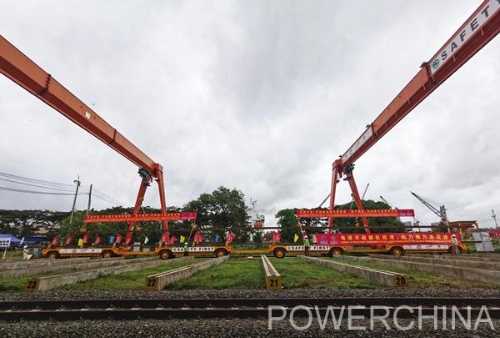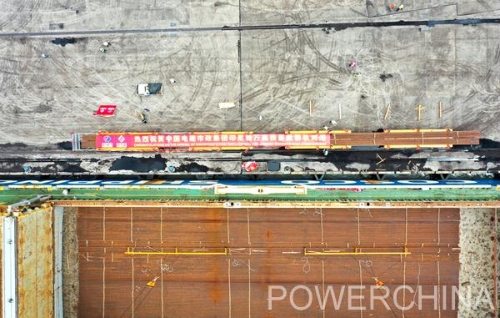The first batch of 50-meter-long steel rails, to be used for the Jakarta-Bandung High-speed Railway, arrived at Cilacap Port in Java province in Central Indonesia on Dec 17.
This marked the point where construction of the Jakarta-Bandung High-speed Railway, being built by POWERCHINA, has made substantive progress.
 |
|
The first batch of steel rails for the Jakarta-Bandung High-speed Railway arrives in Indonesia on Dec 17. [Photo/POWERCHINA] |
The steel rails will be placed in a dedicated site for short-term storage and will then be transported to the depot in the terminal at Tegalluar in Bandung, via narrow gauge railway and a track-laying base contact line.
In recent years, China's high-speed railways have become one of the country's most visible and prominent external calling cards. Indonesia's Jakarta-Bandung High-speed Railway, as one of the main overseas orders from China's industrial chain, has been attracting attention from outsiders.
Since the start of the year -- due to the impact of the global COVID-19 epidemic -- its project materials and personnel have been blocked.
 |
|
The Jakarta-Bandung High-speed Railway is an iconic project for China's Belt and Road Initiative. [Photo/POWERCHINA] |
POWERCHINA project department has implemented science-driven policies and actively responded with exacting novel coronavirus epidemic prevention and control measures, ensuring the project's construction.
The Jakarta-Bandung High-speed Railway project will have a total length of 142.3 kilometers, with 13 tunnels and a designed speed of 350 km per hour. When it starts operations, the time it takes to travel from Jakarta, Indonesia's capital, to Bandung will be reduced from over three hours to 40 minutes.
It is an iconic project of China's Belt and Road Initiative and Indonesia's global maritime fulcrum strategy.
It will greatly improve local traffic conditions, drive the development of industries along the line and increase the levels of regional economic and social development.